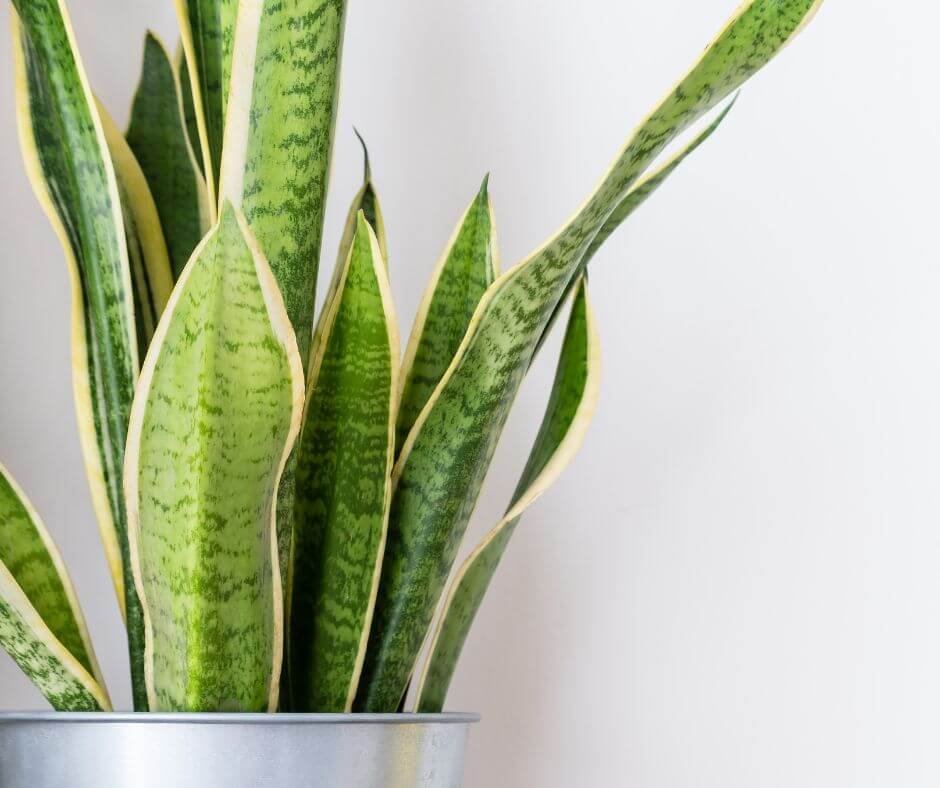Unknown Facts About Snake Plant Leaves Turning Yellow
Wiki Article
About Snake Plant Leaves Turning Yellow
Table of ContentsThe smart Trick of Snake Plant Leaves Turning Yellow That Nobody is DiscussingAll About Snake Plant Leaves Turning YellowUnknown Facts About Snake Plant Leaves Turning YellowUnknown Facts About Snake Plant Leaves Turning YellowThe Only Guide to Snake Plant Leaves Turning YellowThings about Snake Plant Leaves Turning Yellow
Here are seven factors your serpent plant's fallen leaves could be transforming yellow and how to repair it. Several various plant issues can create yellow leaves, or chlorosis. Chlorosis happens when plants don't have the micronutrients they require to generate chlorophyll, which makes foliage green and allows plants to convert sunlight right into food.Serpent plants are dry spell tolerant thanks to their delicious leaves (Snake Plant Leaves Turning Yellow). These plants grow ideal in loose, well-drained soil that's permitted to dry out totally between waterings and may only need water when per month throughout winter season. Overwatering can prevent origins from taking in dampness and nutrients that the plant needs and can also trigger origin rot
A potbound plant can not take in nutrients from the soil. If your snake plant is jammed or outgrowing its pot, this may be the reason of yellow fallen leaves.
Snake Plant Leaves Turning Yellow for Beginners

If the fallen leaves on your serpent plant are obtaining soft, it's typically a sign of way too much water. Snake plants store water in their fallen leaves and if they're overwatered, the fallen leaves can end up being soft and mushy. If you believe your serpent plant is being overwatered, enable the soil to dry totally prior to watering once more.
Yes, some yellowing is typical and to be anticipated on older leaves, particularly as serpent plants age. If the plant is otherwise healthy and balanced and the leaves are just gently yellowed after that there is no reason for problem. If the fallen leaves are dramatically yellowed or if there are other indicators of distress then it's finest to take activity.
Not known Incorrect Statements About Snake Plant Leaves Turning Yellow

In general, serpent plants must be sprinkled every one to two weeks. If you think your snake plant has been overwatered, the first step is to stop watering it.
With a little investigation, you should have the ability to find out the cause and take steps to repair the trouble and have a healthy serpent plant. - Snake Plant Leaves Turning Yellow
Excitement About Snake Plant Leaves Turning Yellow
The serpent plant is an amazing houseplant. The snake plant is just one of those plants that are excellent for growing inside in a terrarium, Snake plants can grow fairly huge, but they additionally often tend to be rather low-maintenance. That does not imply you shouldn't take notice of their appearance. Intend your at the bottom web as a result of a lack of nutrients or various other problems.When the soil is overwatered, the plant cells soak up more water than they can save. Check out here to Leaves come to be soggy and yellow as they soak up much more water. Drooping serpent plant leaves are triggered by soaked-up leaf cells losing their suppleness. You might observe that your serpent plant will certainly end up being black or brown if the yellow patches are not corrected by remedying overwatering.
It is, for that reason, extra most likely that your his comment is here plant will certainly spot yellow patches on its fallen leaves if you overfeed it with fertilizer during winter months. The leaves of serpent plants are additionally susceptible to yellowing when overfed, especially if the roots are fragile. Repotting your yellowing, sprinkling just when the soil dries, and providing optimum temperature level and light problems can conserve it.
Snake Plant Leaves Turning Yellow Things To Know Before You Get This
To quit yellowing triggered by overwatering, stop watering the snake plant until the dirt entirely dries. Do not water more than once a week. Water your snake plant just when the leading two inches of soil feel dry. While waiting on the water to drainpipe, water your serpent plant early in the early morning if your dirt is slow-draining.Your can be gotten rid of by reducing off the yellow suggestions. The pruned fallen leaves need to expand longer if they are sprinkled effectively and have optimal light and temperature problems. It is crucial to bear in mind that the sharp suggestions will certainly not grow back, triggering them to attract attention from the remainder of the fallen leaves.
It won't take wish for the fallen leaves to grow back and expand like the healthy leaves around them. At the same time, you go to my site can get rid of affected fallen leaves from the base of the plant. The shows that it's obtaining way too much or as well little light or nutrients. The key message is to permit the serpent plant time to recoup.
The Basic Principles Of Snake Plant Leaves Turning Yellow
Scroll the article till the end to locate the solution. Pay attention to this write-up here: The situation can be expected if you have had your serpent plant for a lengthy time, and yellowing occurs on the lower leaves as an all-natural aging cycle. It is usual for the Sansevieria leaves to transform yellow due to novice mistakes and when the plant is just bought from the nursery for repotting.Some of the most typical causes are listed here. Sansevierias like completely dry environments and prefer little water maintained at a space of one or two times weekly in summertime and regular monthly in winter season. Yet when the water dose gets out of control, your Sansevieria will endure from overwatering. One of the most usual issue provided by overwatering is origin rot resulting in mushy origins and stems with a foul odor.
Report this wiki page